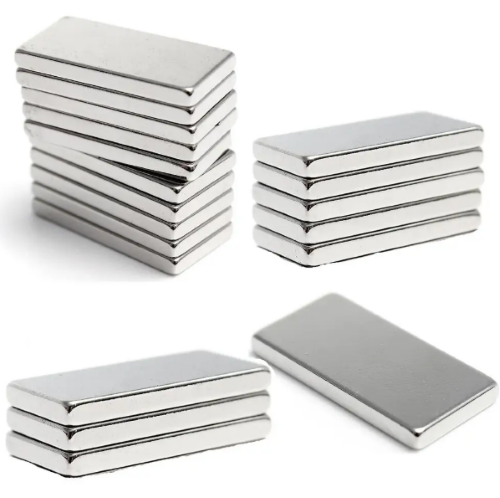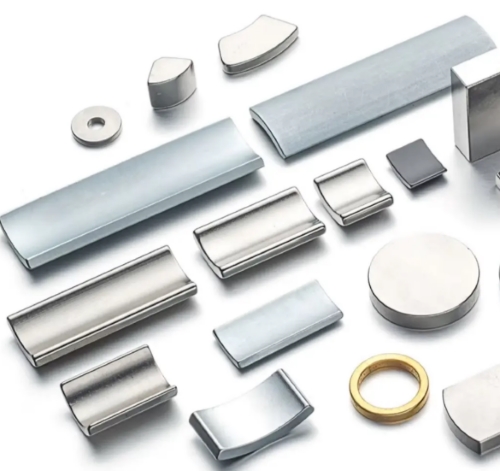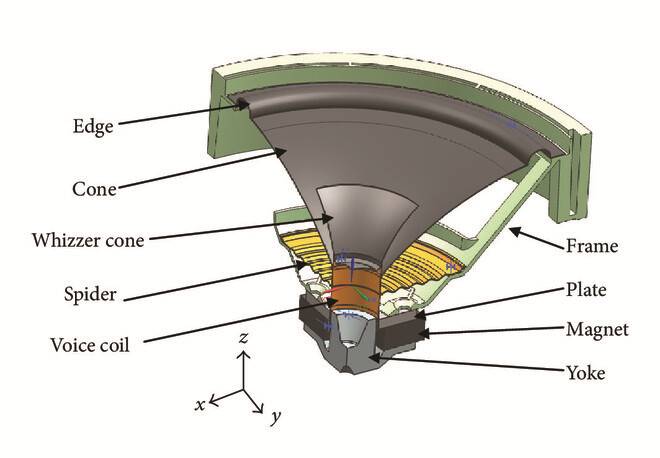Surface Treatment of NdFeB Magnets - Phosphating
As we all know, sintered NdFeB magnets are easily oxidized and corroded, so strict anti-corrosion treatment must be carried out before use. In our last articles, we've introduced the methods of NdFeB magnets surface treatment, like electrophoresis and passivation. So in today's article, let's take a look at the other method of surface treatment of NdFeB Magnets - phosphating.
 Surface Treatment of NdFeB Magnets - Phosphating
Surface Treatment of NdFeB Magnets - Phosphating
The Purpose of Phosphating Treatment:
The phosphating surface treatment of sintered NdFeB permanent magnet has two purposes. The first purpose is to prevent corrosion during processing, and the second purpose is to improve surface wettability.
1. Prevent Corrosion during Processing
Due to the low density and porous characteristics of the sintered NdFeB surface, the exposed magnet will be oxidized in the air, which is also called corroded. Therefore, it is necessary and effective to use the phosphating process for simple anti-corrosion treatment when the NdFeB magnets are too long in turnover and storage time and the subsequent surface treatment method is not clear.
The phosphating process is simple, no equipment investment is required, and the phosphating production process consumes little, mainly acid, alkali, and phosphating liquid, with low production cost. As an anti-corrosion method, it will not significantly increase the production cost of magnets and can avoid the loss of magnets in the storage period, with a high return rate. After the phosphating treatment, the magnet has a uniform color and a clean surface. It can be vacuum packaged to greatly extend the storage time.
The complete phosphating film can resist oxidation corrosion in a normal atmospheric environment. The subsequent surface treatment of phosphating magnet products is very easy, and the phosphating film can be completely removed by simple pickling, which will not hurt the subsequent surface treatment (such as zinc plating, nickel plating, etc.), and the subsequent surface treatment process can be completed at any time.
2. Improve Wettability
Some neodymium iron boron magnets require epoxy adhesive bonding, painting, etc. The bonding force of epoxy organic compounds such as glue and paint requires good wettability of the matrix. Phosphating film and epoxy organic matter have good wettability, so the phosphating process needs to be used to improve the wettability of the NdFeB magnet surface. Good wettability can ensure the bonding force of epoxy glue, epoxy paint, and the magnet.
The Process of Phosphating
The process of phosphating treatment of the magnet surface is: degreasing → washing → pickling → washing → surface conditioning → phosphating treatment → sealing and drying.
Rust Problem after Phosphating
The magnet will still rust after phosphating. There are many reasons for this phenomenon. For example, the concentration of the phosphating agent in the phosphating pool is not enough, resulting in the phosphating film being too thin or loose, which cannot well isolate the air. For another example, the magnet is not washed clean after phosphating, or the acidity of the washing tank is too high, resulting in acidic substances remaining on the magnet, and the acid solution destroys the phosphate film and causes rust. In addition, it is necessary to check whether the degreasing is complete, and the degreasing will also affect the phosphating effect.
Conclusion
Thank you for reading our article and we hope it can help you to have a better understanding of the surface treatment of NdFeB Magnets - phosphating. If you want to know more about magnets, we would like to advise you to visit Stanford Magnets for more information.
Stanford Magnets is a leading magnet supplier across the world, that has been involved in R&D, manufacturing, and sales of magnets since the 1990s. It provides customers with high-quality permanent magnets like neodymium magnets, SmCo magnets, AlNiCo magnets, and ferrite magnets (ceramic magnets) at a very competitive price.















